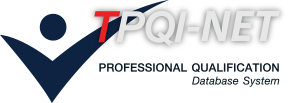หน่วยสมรรถนะ
Inspect, test and troubleshoot rotary wing rotor and control systems and components.
สาขาวิชาชีพการบิน
รายละเอียดหน่วยสมรรถนะ
| 1. รหัสหน่วยสมรรถนะ | AVT-FTN-4-062ZA |
| 2. ชื่อหน่วยสมรรถนะ | Inspect, test and troubleshoot rotary wing rotor and control systems and components. |
| 3. ทบทวนครั้งที่ | - / - |
| 4. สร้างใหม่ |
|
ปรับปรุง |
|
| 5. สำหรับชื่ออาชีพและรหัสอาชีพ (Occupational Classification) | |
|
|
|
| 6. คำอธิบายหน่วยสมรรถนะ (Description of Unit of Competency) | |
| This unit of competency employs hand skills, maintenance publications, and knowledge of rotors and rotor control system theory in the inspection, testing and troubleshooting of rotary wing aircraft rotors and rotor control systems during scheduled or unscheduled maintenance. This work may be carried out individually or as part of a team. | |
| 7. สำหรับระดับคุณวุฒิ |
| 1 | 2 | 3 | 4 | 5 | 6 | 7 | 8 |
|---|---|---|---|---|---|---|---|
| 8. กลุ่มอาชีพ (Sector) | |
| 10 Aircraft Mechanics | |
| 9. ชื่ออาชีพและรหัสอาชีพอื่นที่หน่วยสมรรถนะนี้สามารถใช้ได้ (ถ้ามี) | |
| N/A | |
| 10. ข้อกำหนดหรือกฎระเบียบที่เกี่ยวข้อง (Licensing or Regulation Related) (ถ้ามี) | |
| ICAO Doc 7192 / EASA Part 66 | |
| 11. สมรรถนะย่อยและเกณฑ์การปฏิบัติงาน (Elements and Performance Criteria) |
| หน่วยสมรรถนะย่อย (EOC) | เกณฑ์ในการปฏิบัติงาน (Performance Criteria) | รหัส PC (ตามเล่มมาตรฐาน) |
รหัส PC (จากระบบ) |
|---|---|---|---|
| 102401.01 Inspect and ground rotor and rotor control systems and components. | 102401.01.01 Isolation and warning signs are attached/installedto the system or related systems and the aircraft configured for safe systeminspection and operation according to relevant aircraft publications/maintenance regulations orders and standards and practices. Rotor and rotor control system is visually or physicallychecked/inspected for external signs of defectsaccording to relevant aircraft publications maintenance regulations/orders and standards and practices while noticing allrelevant work health and safety (WHS) requirements. Defects are identified and recorded according to standardenterprise procedures. | 102401.01.01 | 71212 |
| 102401.01 Inspect and ground rotor and rotor control systems and components. | 102401.01.02 Aircraft and systemprepared according to relevant aircraft publications/maintenanceregulations orders and standards and practices for the operation of engineand rotor system. Rotor and rotor control system arefunctionally tested according to relevant aircraft publications maintenanceregulations/orders and standards and practices forindication of malfunction. System calibration oradjustments are performed in accordance with relevant aircraft publications/maintenance regulations/orders andstandards and practices. | 102401.01.02 | 71213 |
| 102401.02 Troubleshoot rotor and rotor control systems. | 102401.02.01 Relevant aircraft publications and modification status,including system defect reports, are interpreted to identify anunserviceability. Available information from aircraftmaintenance documentation, inspection and test results is employed to assistin fault determination. Relevant aircraft publicationfault diagnosis guide and logical processes are employed to ensure efficientand accurate troubleshooting to line replacement level. Specialistadvice is acquired to assist with the troubleshooting process. | 102401.02.01 | 71214 |
| 102401.02 Troubleshoot rotor and rotor control systems. | 102401.02.02 Rotor and rotorcontrol system faults are located and the causes of the faults are clearlyidentified and recorded in aircraft maintenance documentation according tostandard enterprise procedures.Fault rectificationrequirements are determined. | 102401.02.02 | 71215 |
| 12. ความรู้และทักษะก่อนหน้าที่จำเป็น (Pre-requisite Skill & Knowledge) | |
|
|
|
| 13. ทักษะและความรู้ที่ต้องการ (Required Skills and Knowledge) | |
|
(ก) ความต้องการด้านทักษะ
(ข) ความต้องการด้านความรู้
|
|
| 14. หลักฐานที่ต้องการ (Evidence Guide) | |
|
N/A |
|
| 15. ขอบเขต (Range Statement) | |
|
• Industry standard procedures specified by manufacturers, regulatory authorities or the enterprise |
|
| 16. หน่วยสมรรถนะร่วม (ถ้ามี) | |
| N/A | |
| 17. อุตสาหกรรมร่วม/กลุ่มอาชีพร่วม (ถ้ามี) | |
| N/A | |
| 18. รายละเอียดกระบวนการและวิธีการประเมิน (Assessment Description and Procedure) | |
|
• Individuals being assessed who have already attained 102303 Maintain basic rotary wing aircraft systems will have satisfied the requirements of this unit with regard to common Range of Conditions variables. The Log of Industrial Experience and Achievement records relating to 102303 Maintain basic rotary wing aircraft systems may be accepted as also meeting the evidence requirements for this unit in the applicable common areas. |
|
